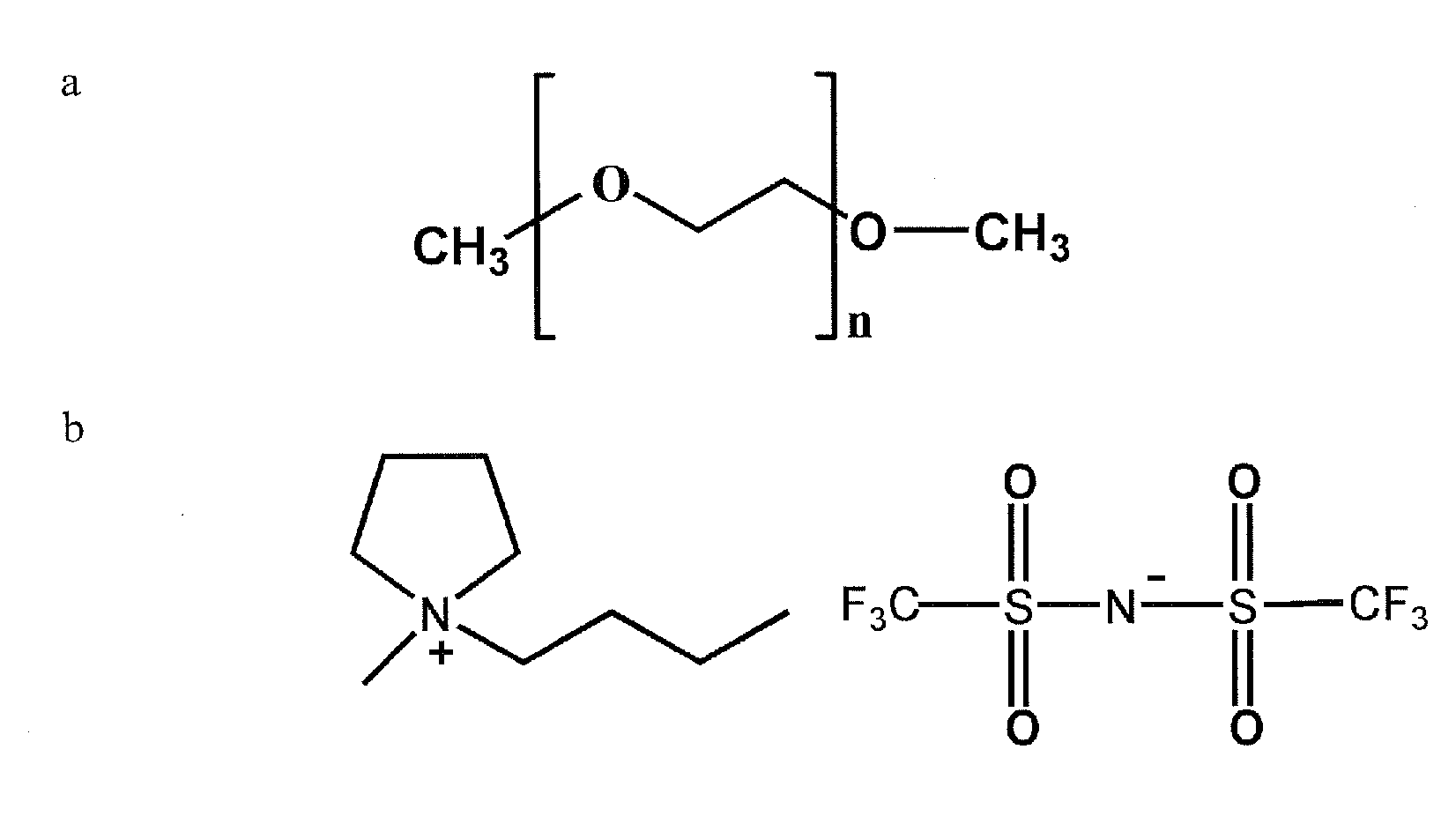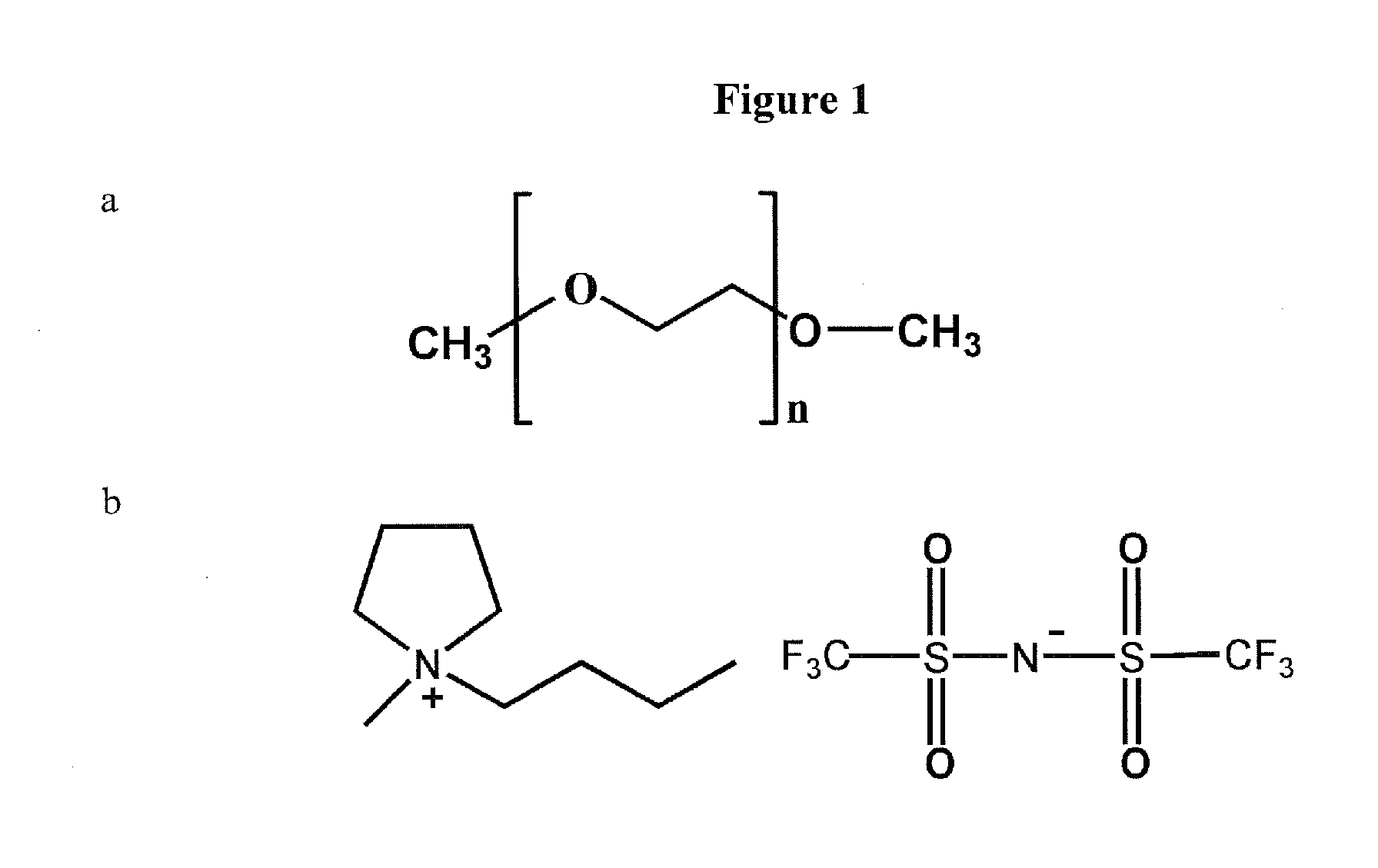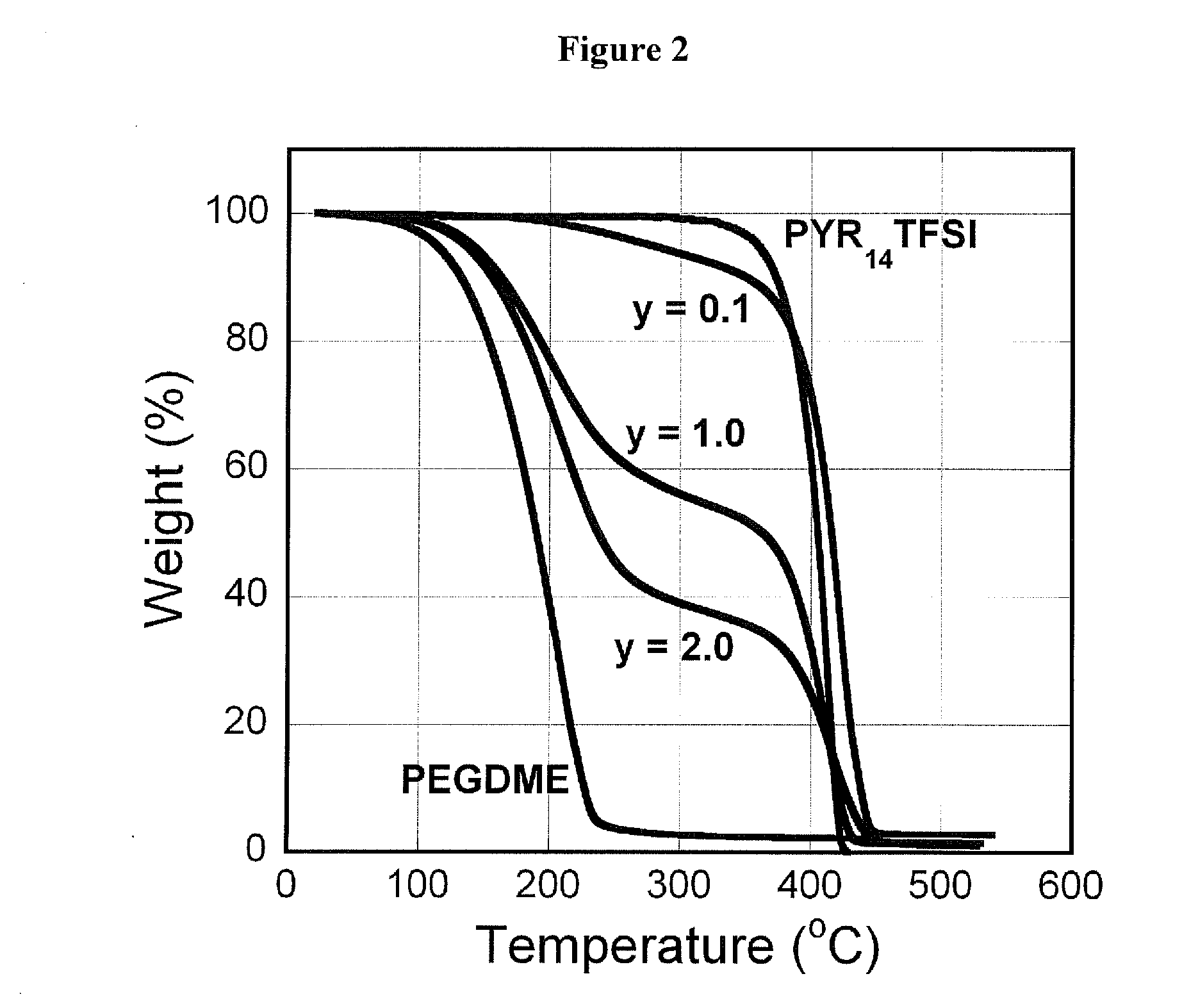Electrolyte mixtures useful for li-ion batteries
a lithium ion battery and electrolyte technology, applied in the direction of non-aqueous electrolyte cells, cell components, electrochemical generators, etc., can solve the problems of short circuit, high interfacial impedance, short circuit, etc., and achieve thermal stability and safer systems.
- Summary
- Abstract
- Description
- Claims
- Application Information
AI Technical Summary
Benefits of technology
Problems solved by technology
Method used
Image
Examples
example 1
Electrolyte Preparation
[0072]Materials. [N-methyl-(n-butyl)pyrrolidinium]+[bis(trifluoromethanesulfonyl)imide]− (PYR14TFSI, see FIG. 1 for chemical structure) ionic liquid salt is synthesized and is dried at about 130° C. overnight in a vacuum oven before use. Elemental sulfur (sublimed sulfur powder, Alfa Johnson Matthey), carbon black (Shawinigan black, 50% compressed) and poly(vinylidene fluoride) (PVDF, Kynar) are dried in a vacuum oven overnight at 50, 130 and 90° C., respectively, before use.
[0073]Electrolyte preparation. Poly(ethylene glycol) dimethyl ether (PEGDME, Fluka, Molecular weight=250, of the chemical structure presented in FIG. 1) is passed through a column filled with alumina (MP Alumina N-Super I, MP Biomedicals Germany GmbH) to obtain dry polymer with limited H2O (˜30 ppm) level before use. A number of PYR14TFSI+x LiTFSI+y PEGDME mixtures were then prepared for which x was of the value of 0.5 m (moles per kg) of PYR14TFSI, and where y had the values of 0.1, 1.0, ...
example 2
Preparation of the Sulfur Cathode, Assembly and Testing
[0074]Sulfur cathode preparation. First, sulfur powder suspended in ˜15 ml of N-methylpyrrolidone (dried through a column filled with alumina, NMP, H2O content of 30 ppm determined by Karl Fisher Coulometer (Mettler Toledo DL39)) is ball milled for 1 hour (referred to as CS1) or 6 hours (referred to as CS2) at a rotation speed of 200 rpm using a planetary mono mill (PMM, Pulverisette 6, Fritsch) and then carbon black, PVDF (polyvinylidene fluoride) binder and LiTFSI are added to the ball-milled sulfur suspension and this mixture is ball milled for an additional 1 hour (CS1) or 2 hours (CS2) under the same conditions. The resulting slurry is coated onto a carbon-coated Al foil substrate using a doctor blade. The solvent is allowed to evaporate overnight at ambient temperature. The resulting cathode film (ca 50 μm thick) is used to prepare the cathodes by punching circular discs having an area of 0.9 cm2. These discs are dried at ...
example 3
Ionic Liquid, Polymer, Lithium Salt Mixture for Li / S cells
[0077]The addition of a low molecular weight polymer t such as PEGDME (e.g., as a component of a PYR14TFSI+LiTFSI+PEGDME mixture) results in improved compatibility of the ionic liquid electrolyte containing PEGDME with a Li metal electrode, which allows for low temperature operation at a moderate current density and longer cycle life of the Li electrode in a battery containing such electrolytes. In particular, a lithium / sulfur battery containing the electrolyte mixture PYR14TFSI+LiTFSI+PEGDME reveals improved cyclability and low temperature charge / discharge capability.
[0078]A ternary mixture, PYR14TFSI+x LiTFSI+y PEGDME (x is LiTFSI mol / PYR14TFSI-kg and y is the mass ratio of PEGDME / PYR14TFSI), is used as an electrolyte in Li / S cells. The physical and electrochemical properties of the mixture as well as the charge and discharge capability of Li / S cells is also characterized using these mixtures as the electrolyte at various t...
PUM
| Property | Measurement | Unit |
|---|---|---|
| Temperature | aaaaa | aaaaa |
| Length | aaaaa | aaaaa |
| Length | aaaaa | aaaaa |
Abstract
Description
Claims
Application Information
 Login to View More
Login to View More - R&D
- Intellectual Property
- Life Sciences
- Materials
- Tech Scout
- Unparalleled Data Quality
- Higher Quality Content
- 60% Fewer Hallucinations
Browse by: Latest US Patents, China's latest patents, Technical Efficacy Thesaurus, Application Domain, Technology Topic, Popular Technical Reports.
© 2025 PatSnap. All rights reserved.Legal|Privacy policy|Modern Slavery Act Transparency Statement|Sitemap|About US| Contact US: help@patsnap.com



